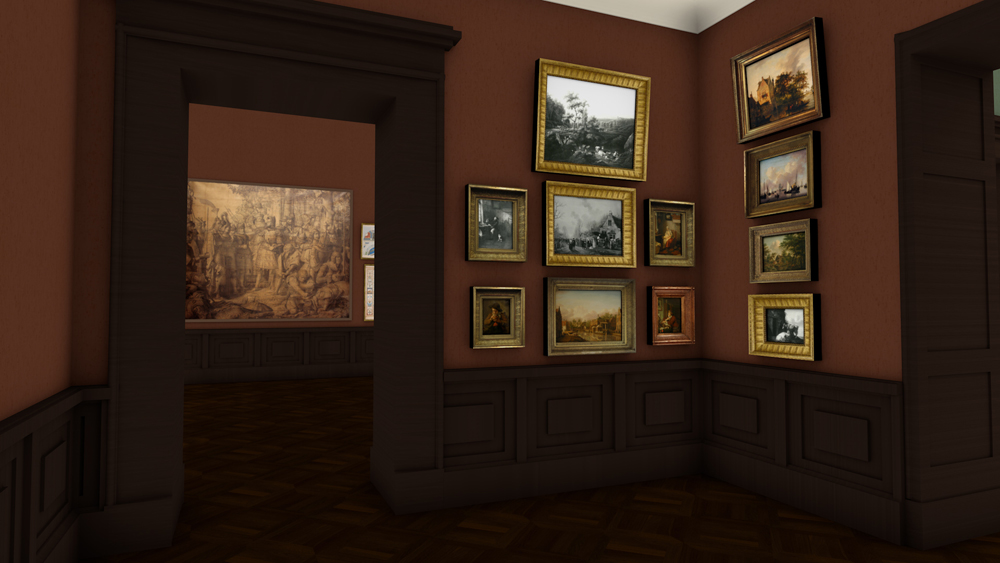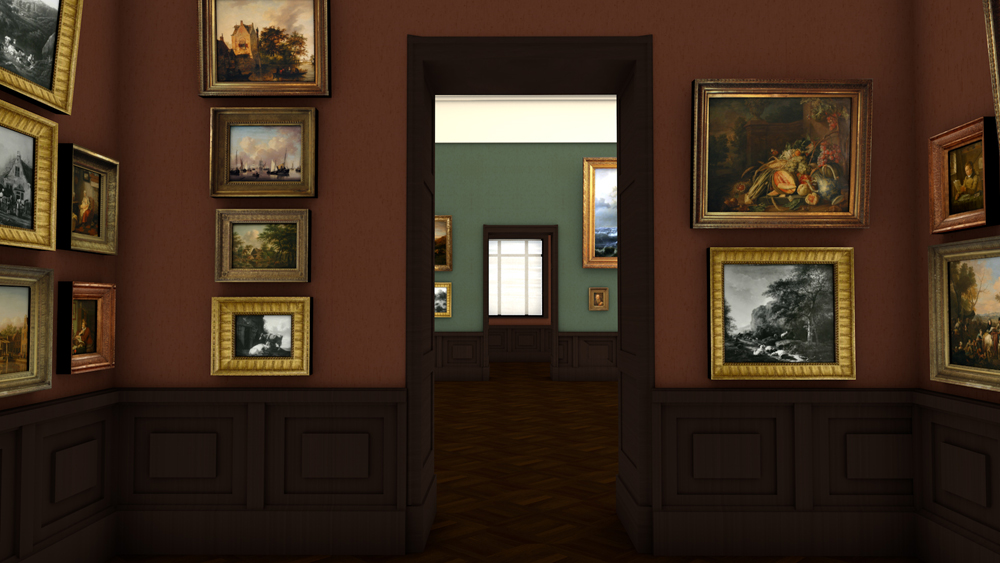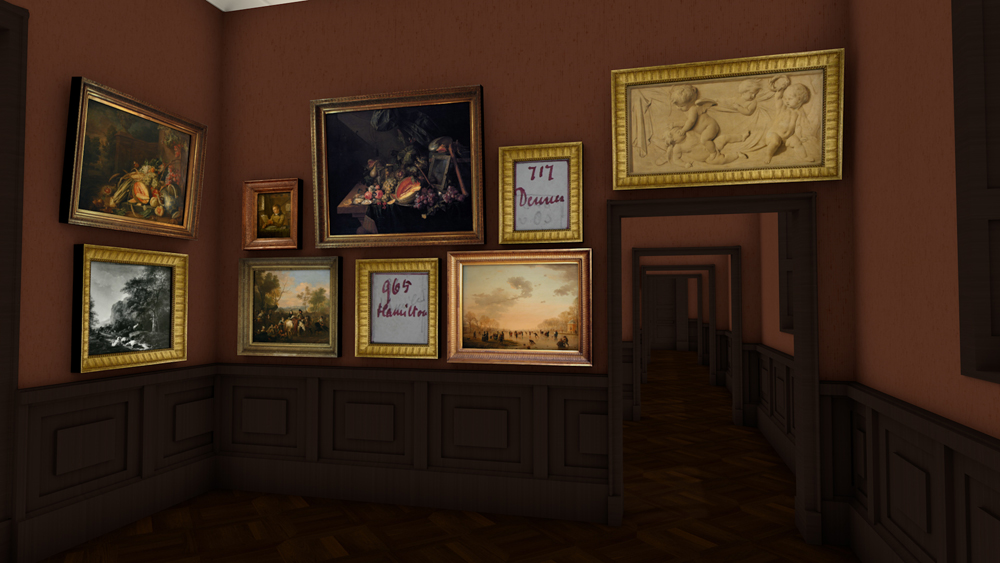1878 Cabinet 10
Continuation
of the “Golden Age”
The final cabinet on the eastern side of the building was reserved for eighteenth-century painting. The genre pieces, cityscapes and seascapes appeared to seamlessly continue the “golden” seventeenth century of Dutch painting into the present day.
Johann Friedrich Städel and Johann Georg Grambs, one of the first members of the Städel Board, had integrated the paintings of their Dutch contemporaries Andries Vermeulen, Jan van Os, Paul Constantijn la Fargue, and Gerrit Zegelaar into their collections of seventeenth-century works without distinction. This custom was still maintained at the Städel in 1833. At the Schaumainkai in 1878, however, the representatives of “classic” Dutch Baroque painting were clearly separated from their followers of around 1800. By placing them in the last of the eastern cabinets, visitors could directly compare these works with nineteenth-century Flemish painting, represented by works by Louis Gallait and Hendrik Leys in the adjacent large skylight room featuring “modern art”.





